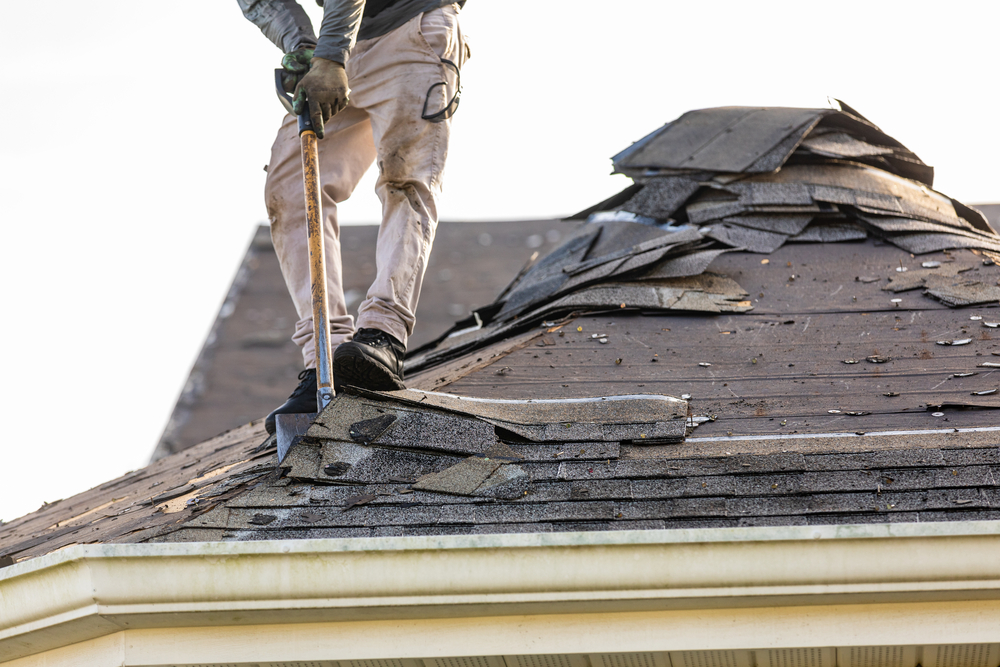A professional can do the job for you if you're not familiar with the process. However, if you're a handy homeowner who likes to spend a few hours on your roof each year, you can also learn how to remove shingles yourself. If you're not sure how to do it safely, you can follow these steps to make the process go smoothly. You'll need a ladder, a shingle scraper, and heavy work gloves. The first step in the removal process is to carefully slide under the top layer of shingles. The shingles will slide out, and you'll need to remove them.

To remove shingles, first lay down tarps, felt, or plywood. Then, use a pry bar to bend and remove them from the roof. When removing shingles, be careful not to rip off the nail head, as it may break and leak onto your hands. Be sure to check the gutters for stray shingles. Finally, use a magnetic broom to sweep your lawn and your garden.
After removing all the shingles, take care not to damage the rest of the roof. The shingles are very heavy and can damage the surrounding areas, especially skylights. To prevent this, use a jack to lift up the shingles. After removing them, secure the shingle with roof cement and replace it. If it's still there, make sure to remove all the debris that may have accumulated on the top of the roof.
Using a hammer and pry bar, you can remove the top layer of shingles. You can then lift the remaining shingles using a sturdy ladder. Once you have removed the upper layer of shingles, you can start working on the lower layer of a roof. To remove the upper layer of shingles, use a small shovel and scraper. As the shingles are lifted up, they should fall off in large sheets.
After removing shingles, you should take care of the tarred flashing. If the tarring is on the skylight, it signals that the flashing underneath is bad. In this case, you can save the flashing and save the shingles. Moreover, you can also save the skylight by lifting the shingles from the top. You can even remove it by bending up and pulling the shingles.
Next, you'll need a rake. A rake is a specialized tool for removing shingles. It is ergonomically-shaped and designed to translate leverage. It should also not bend and be non-slippery. It should be sturdy enough not to fall on it and should not cause blisters. As you remove the shingles, you'll need to unload the debris and any nails on the ridge caps.
Once you've completed the tearing process, you'll need to remove the flashing. It is an important part of the roof that protects the shingles and prevents them from falling. In addition to shingles, flashing also protects the roof from the elements, so it's important to remove it. A rake and a garden fork should be used to tear off the ridge caps of the roof.
The next step in removing shingles is to remove the ridge caps. You can do this by lifting the shingles and slipping down. A rake and a roof jack are necessary for safety and stability. Once you've removed the ridge caps, you can proceed to the next step of removing shingles. You should work your way down the roof, working in two- or three-foot sections, ensuring that the shingles are all removed properly.
To remove the shingles, you'll need a hammer and roofing nails. To remove the ridge cap, you need to pry the shingle off the ridge cap. A flat-pry bar will help you pry the shingle from the sealer strip. You can also use a utility knife to pry off the nails on the roof. Then, remove the rest of the shingles by hand, and discard them in the proper places.
